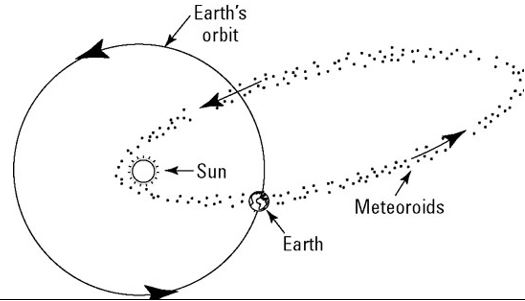

Context
The Eta Aquariid meteor shower, originating from the famous Halley's Comet, is set to peak soon.
Formation of Eta Aquariid Meteor Shower
- The Eta Aquariid meteor shower is formed when the Earth passes through the orbital plane of Halley's Comet, a periodic comet that orbits the Sun every 76 years.
- This celestial event occurs annually.
- First observed in 240 BCE, the recurring appearances of this comet were elucidated by astronomer Edmond Halley in
- Characteristics: Comprising burning space debris moving at speeds of around 66 km per second, the Eta Aquariid meteor shower is known for its rapid speed, resulting in long, glowing tails that can last several minutes.
- This spectacle is best visible to countries in the Southern Hemisphere, such as Indonesia and Australia.
- Association with Other Meteor Showers: Similar to the Eta Aquariids, the Orionids meteor shower also originates from Halley's Comet and occurs annually in October.
Fact Box: About Meteors
|




